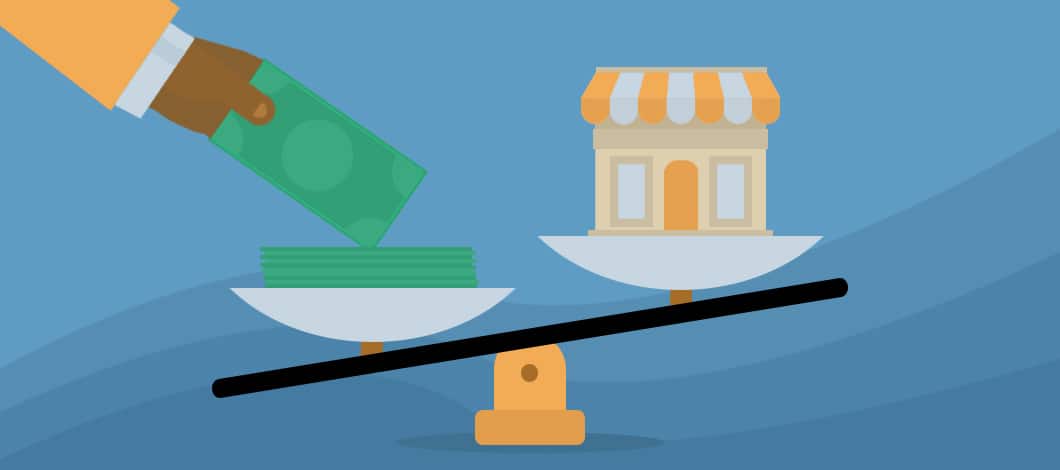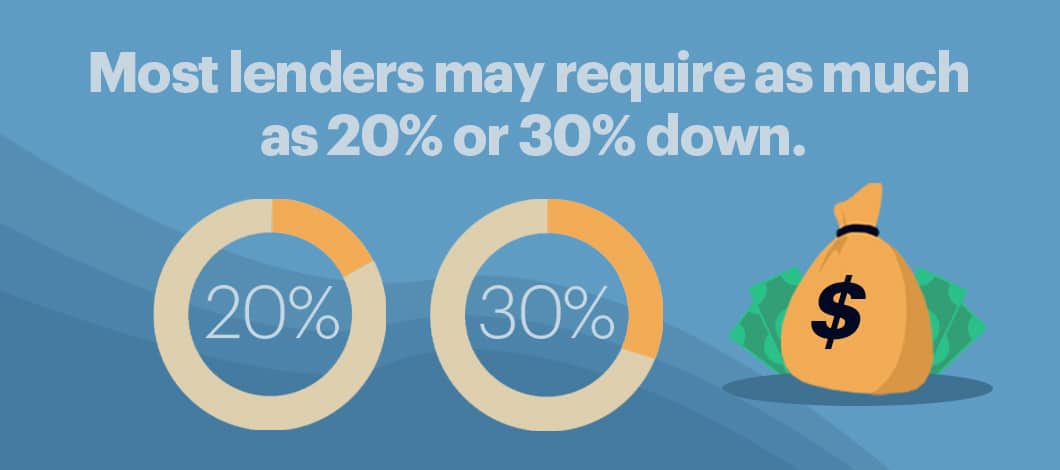Understanding Small Business Administration (SBA) loan down payment requirements can help you secure financing and obtain better rates.
Here’s an overview of the essentials. We’ll look at how SBA loan down payments work, what the minimum requirements are and how lenders go about setting payment amounts. We also will provide some tips on how to use your down payment to negotiate better loan terms and what you can do if you can’t afford a down payment.
How Does an SBA Loan Down Payment Work?
SBA loan programs are designed to help provide affordable financing for small businesses that normally would have difficulty qualifying for standard bank loans. To lower the risk to banks and other lenders, the federal government (through the SBA) agrees to guarantee a portion of loans that participating lenders extend to qualifying small businesses.
In return, participating lenders agree to abide by federal regulations that make SBA loans affordable for small businesses, such as interest rate caps. Should borrowers default on SBA loans, the federal government will cover a portion of the loss to lenders. Through this arrangement, lenders can afford to take on the risk of extending loans to small businesses that wouldn’t qualify under normal circumstances.
How Down Payments Help Make SBA Loans Possible
Down payments help facilitate this arrangement by further reducing risk to lenders. A down payment, in conjunction with other guarantees provided by the borrower and by the SBA’s guarantee, significantly reduces the amount of money a lender stands to lose should the borrower default.
The SBA requires minimum down payments for certain types of loans. Lenders may choose to require higher down payment amounts based on the perceived risk of default. Under certain conditions, they also may choose to cover part of the SBA’s minimum requirement.
A borrower with strong qualifications, such as high revenue or valuable collateral or a good credit score, may be asked to pay a lower down payment. However, agreeing to pay a higher down payment lowers the risk to your lender and may qualify you for better repayment terms.

Are Down Payments Always Required on SBA Loans?
Minimum down payments are required on some of the SBA’s most popular loan programs, including:
- SBA 7(a) loans, a general set of loan programs that provide amounts up to $5 million to small businesses with a variety of financing needs, such as purchasing real estate, paying for working capital expenses and refinancing debt
- SBA Certified Development Company (CDC)/504 loans, which provide long-term, fixed-rate financing in amounts up to $5 million for investment in major fixed assets that promote business growth and jobs
Some other SBA loan programs do not require down payments for certain types of loans that either represent lower risk to lenders or serve the needs of businesses that can’t afford down payments:
- Microloans, which provide short-term loans up to $50,000 to help businesses expand
- CAPLines, which are lines of credit of up to $5 million for small businesses with seasonal financing needs
- SBA disaster loans, which provide financing for certain types of expenses incurred by businesses as a result of officially declared disaster situations such as those stemming from severe weather or the COVID-19 pandemic
Note that although the SBA does not require down payments for microloans, lenders working with the SBA have some flexibility in setting microloan terms and may opt to require down payments.
Why Do Some SBA Loans Require Down Payments?
SBA lenders that require down payments do so to protect all parties involved in loan agreements, including the SBA itself, lenders and borrowers.
The SBA stands to lose the portion of a loan it guarantees if the borrower defaults. By requiring the borrower to provide a down payment, the SBA is requesting evidence of the borrower’s ability to manage their finances responsibly, qualifying the borrower and reducing the risk of default.
A down payment also reduces the amount of money the SBA will have to cover in the event of a default, as the SBA’s obligation is based on a percentage of the total amount owed.
In similar ways, a down payment protects the lender. It shows the lender that the borrower has some ability to repay what they owe, and it reduces the amount the lender stands to lose if the borrower defaults.
Finally, a down payment protects the borrower. Providing a down payment requires the borrower to exercise fiscal responsibility, making them less likely to default. Furthermore, a down payment reduces the amount of money and interest the borrower will owe. Last but not least, a higher down payment can help the borrower secure better rates and terms from the lender, as the lender faces less risk for the reasons stated above.
How Much Are SBA Loan Down Payments?
SBA down payments vary. SBA 7(a) loan down payment and CDC/504 loan down payment minimums typically start at 10%. Most lenders exceed these minimums and may require as much as 20% or 30% down.
However, under certain conditions, the SBA allows lenders to cover 5% of the 10% requirement when a business is using the money to purchase another company of a type it doesn’t own. This is allowed if the seller owns a second mortgage on what is called standby, a situation that injects qualifying equity as additional collateral and thereby lowers lender risk.

How Do Lenders Set SBA Loan Down Payment Percent Amounts?
Lenders may consider a number of criteria when deciding how much of a down payment to require, including:
- SBA minimums
- The borrower’s revenue and cash flow
- How much collateral the borrower has
- The borrower’s credit score
These factors will help determine how much of a down payment your lender requires, although they may weigh in other variables.
When Can I Get a Lower Down Payment Requirement?
Lenders typically raise cash flow requirements when you have a weak cash flow, a lack of collateral or a low credit score. You can offset these factors by taking steps to increase your cash flow, find additional collateral or raise your credit score.
How Can I Use a Loan Down Payment to Negotiate Better Loan Terms?
The more money you put up for a down payment, the less you need to borrow and the less risk you pose to your lender. Because of this, a higher down payment normally translates into lower monthly payments and interest rates.
If your lender allows you to negotiate your down payment, consider putting up more than their minimum requirement in order to obtain more favorable repayment terms.
What Sources Can I Use for SBA Loan Down Payments?
The SBA allows you to use a number of sources to fund down payments, including:
- Cash on hand from your business balance sheet or your personal finances
- Equity in business or personal property
- Balance sheet equity, in rare cases
- Certain retirement account rollovers
- Borrowed money
- Investor financing
- Gifts
Your down payment may come from one or a combination of these resources.
What Can I Do If I Can’t Afford an SBA Loan Down Payment?
If you can’t afford the down payment for an SBA loan, consider seeking a cash injection from one of the sources listed above. For example, you may be able to find an investor to provide SBA down payment assistance.
Alternately, you may be able to raise money for a down payment or otherwise cover your financing by using alternate financing resources such as business term loans or lines of credit. The SBA requires you to explore other financing resources before using their loan program, so you should be looking into this anyway before considering an SBA loan.
SBA Loan Down Payment: Is It the Best Way for You to Find Financing?
SBA loan down payments protect the SBA, lenders and borrowers from the risk of loan default. The SBA 7(a) and CDC/504 loan requirements include down payment minimums, but this isn’t a requirement for other SBA loan programs such as SBA microloans, CAPLines and disaster loans. When down payments are required, amounts start at 10%, but lenders may choose to require higher amounts or they may cover half of the down payment in certain circumstances.
Lenders set down payment requirements based on the perceived risk of loan default, so you may have a lower requirement if you have strong assets or good credit. Paying a higher down payment reduces risk to the lender and may allow you to obtain more favorable loan repayment rates. If you can’t afford an SBA loan down payment, you may be able to find an investor to cover it or you may be able to obtain funding from a different financing source.
Fast Capital 360 works with a network of SBA lenders and other financial providers to help small businesses obtain the funding they need. To see your loan options, take a few minutes to fill out our free, no-obligation prequalifying application and find out what types of SBA loans and other financing options you may qualify for.










